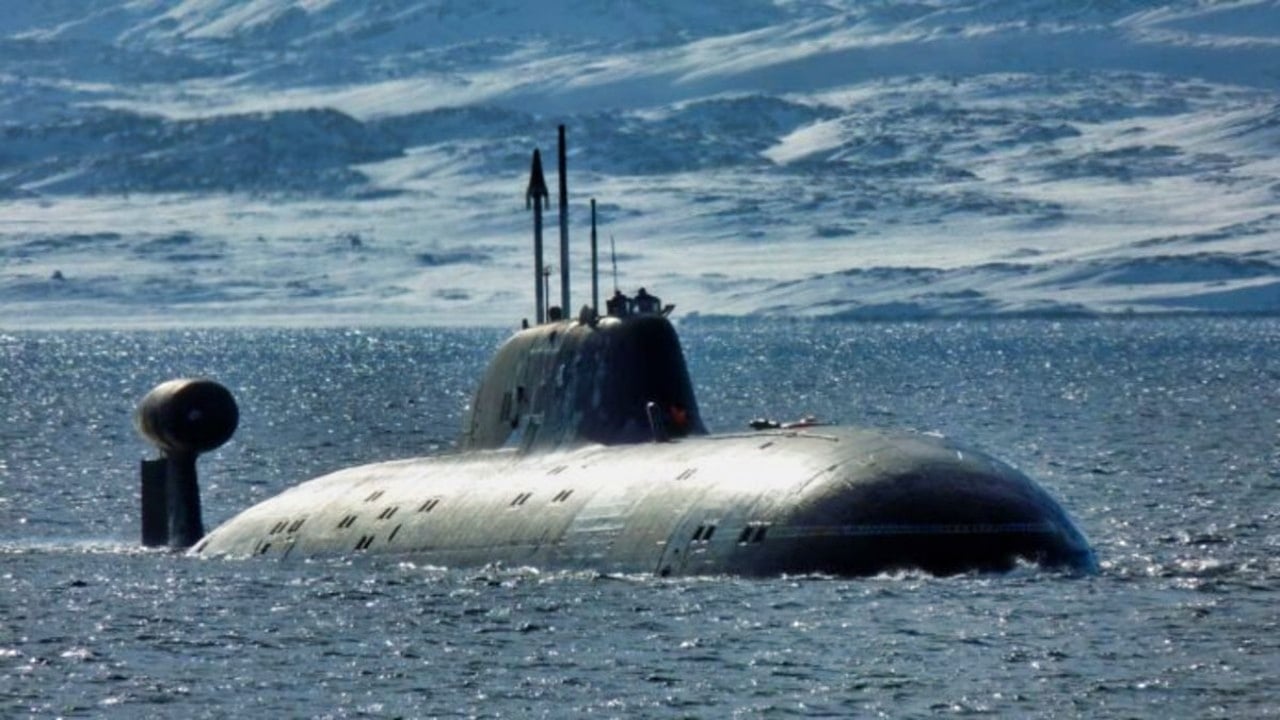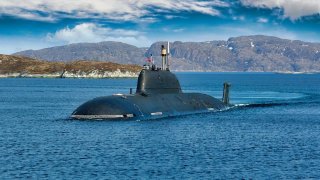Akula: The Russian Submarine The U.S. Navy Truly Hates
The Akula-class submarines, built by Amur Shipbuilding Plant and Sevmash, are a testament to Russian naval engineering. Featuring a double hull design, these submarines offer greater buoyancy and versatility compared to their Western counterparts.
Summary and Key Points: The Akula-class submarines, built by Amur Shipbuilding Plant and Sevmash, are a testament to Russian naval engineering. Featuring a double hull design, these submarines offer greater buoyancy and versatility compared to their Western counterparts. Powered by the OK-650B pressurized water reactor, also used in various other Soviet submarines, the Akula-class submarines are known for their advanced capabilities and reliability.

-The Akula I variants include the Puma, Delphin, Kashalot, Kit, Pantera, Bars, and Narvel, while the improved Akula-class, Project 971U, consists of Volk, Morzh, Leopard, Tigr, and Drakon. The lone Akula II variant, Vepr (K-157), launched in 1994, showcases significant advancements in armament and sensors. India leased an Akula II submarine, renamed INS Chakra, from Russia, though it was returned early due to propulsion issues.
-The Akula-class submarines remain a critical component of the Russian Navy, with the Vepr expected to stay in service for decades.
Akula-Class: Russia’s Formidable Submarines and Their Role in Modern Naval Warfare
The Akula-class submarines were constructed by the Amur Shipbuilding Plant Joint Stock Company at Komsomolsk and by Sevmash at the Severodvinsk shipbuilding yard.
Each submarine was designed as a double hull system consisting of an inner pressure hull and an outer hull. This layout enables more freedom in the exterior hull’s shape, allowing the submarine to reserve more buoyancy than its Western counterparts.
Each Akula submarine is powered by one OK-650B pressurized water reactor, the same system incorporated onto many Soviet predecessors.
When the OK-650 was introduced to service in the 1970s, it was considered more advanced and reliable than previous submarine reactors. This reactor has also been installed on the Sierra I, Sierra II, the Oscar I, Oscar II, and Typhoon class submarines.
The first seven boats that make up the Akula I class are the Puma, Delphin, Kashalot, Kit, Pantera, Bars and Narvel. An improved Akula-class variant known as Project 971U includes the Volk, Morzh, Leopard, Tigr and Drakon.
In terms of armament, the Akula class was quite formidable. Each submarine was designed to carry S-10 Granat (designated by the West as SS-N-21 Sampson) cruise attack missiles. The S-10 Granat is comparable to the American-made Tomahawk. Subsequent Akula-class variants were fitted with six additional 533mm external torpedo tubes.
The submarine class also sported more advanced sensors than previous submarines. Specifically, the Akula’s surface search radar is the Snoop Pair or Snoop Half.
As detailed by Naval Technology, “]T]he submarine is fitted with the MGK 540 sonar system which provides automatic target detection in broad and narrow-band modes by active sonar. It gives the range, relative bearing and range rate. The sonar system can also be used in a passive, listening mode for detection of hostile sonars. The sonar signal processor can detect and automatically classify targets as well as reject spurious acoustic noise sources and compensate for variable acoustic conditions.”
The Akula II variant
Only one Akula II variant was ever completed- the Vepr (K-157).
In 1990, her keel was laid down and she officially launched four years later. In 1995, the Vepr commissioned. Two additional Akula II-class variants were planned in the late 1990s. However, neither boat was completed.
Notably, the hull sections from the Rys (K-333) and the Kuguar (K-337) were later incorporated in the constructions of the Alexander Nevsky and Yury Dolgorukiy. The Akula II submarines measured at 110m long and could displace up to 12,770t.
Each submarine in this class had a top speed of 35 knots submerged and a maximum diving depth of 600m. Although construction of the Akula II began back in 1991, it was suspended for nearly a decade due to a shortage of funds.
India and the Akula-Class
A unique leasing opportunity arose when Moscow granted the Indian Navy the ability to “rent” the Akula II submarine.
The SSN, renamed INS Chakra by New Delhi in 2023, was expected to enter service with the Indian Navy in 2007. However, several delays postponed this deadline. At first, issues with installing new systems and technologies onboard set engineers back in schedule. In 2008, a fatal gas leak that broke out on the submarine led to the deaths of 20 civilian crew members, further pushing the submarine’s entry to service back.
Ultimately, New Delhi would sail the INS Chakra for under nine years before returning the submarine to Russia in 2021. Reports suggested that the submarine was returned to Moscow early due to issues with its nuclear propulsion system.
The Akula II SSN was more formidable in armament than its sister variant. Armed with four 533mm torpedo tubes, the submarine could deploy Type 53 torpedoes, RPK-6 or RPK-2 missiles.
Additionally, this vessel could sport naval mines, the RPK-7 missile and four 650mm torpedo tubes.

In 2022, NATO naval forces monitored the Vepr when it transited from the Northern Fleet to the Baltic. The boat is expected to remain in service with the Russian Navy for another few decades.
About the Author: Maya Carlin
Maya Carlin, National Security Writer with The National Interest, is an analyst with the Center for Security Policy and a former Anna Sobol Levy Fellow at IDC Herzliya in Israel. She has by-lines in many publications, including The National Interest, Jerusalem Post, and Times of Israel. You can follow her on Twitter: @MayaCarlin. You can email the author: [email protected].
All images are Creative Commons.


